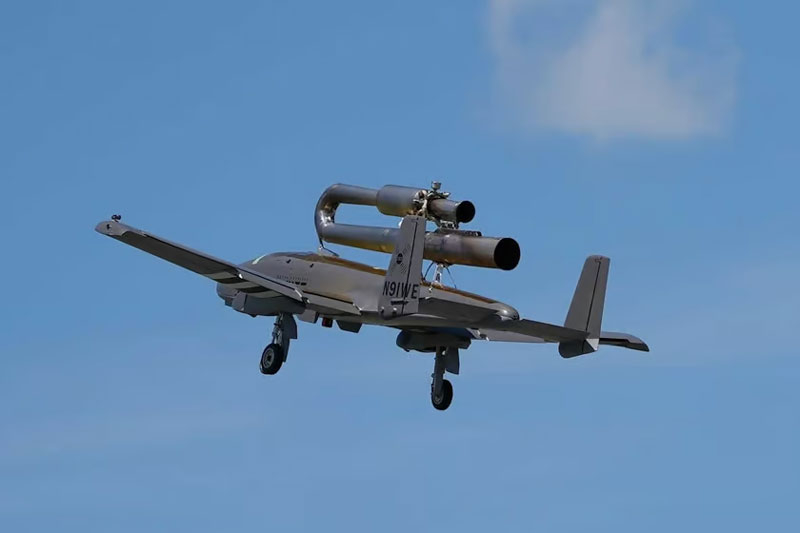Wave Engine Corporation has announced that it has begun supplying new J-1 jet engines for drones weighing up to 90 kg to a defense contractor. These engines are interesting for their absolute simplicity and reliability – they do not have any mechanics that sooner or later lead to breakdowns. The new type of jet engine was not a revelation, but combined with digital technologies, its prospects turned out to be enormous.

Image Source: Wave Engine Corporation
Wave Engine Corporation grew out of the University of Maryland and a project to revive the pulse jet engine, which had been around for over a century. An engine of this type consists of two pipes with a common combustion chamber. The liquid fuel injected into the chamber is ignited and creates a shock wave region moving in both tubes, producing thrust. The vacuum that has arisen in the chamber sucks in a new portion of air, the fuel is again injected and ignited, and so on until the engine must run.

The design of such an engine is extremely simple – there is nothing to break in it. The use of digital control made it possible to optimize engine operation and make it as controllable as possible. Back in March, the Wave Engine company demonstrated the remote launch of such an engine as part of the proprietary Scitor-D drone. The drone also made a number of flights, proving its high reliability and engine controllability. The tests led to a contract with an unnamed “leading” defense contractor to supply a series of jet engines for drones.
The J-1 engine, weighing 8.2 kg and measuring 14 × 32 × 163 cm, creates a thrust of up to 245 N. It is capable of propelling aircraft-type drones weighing up to 90 kg. The engine runs on any type of liquid fuel: gasoline, kerosene or E85 bioethanol. The company is also developing a version of the K-1 engine with a thrust of up to 979 N for drones weighing up to 454 kg. During testing of a drone with a J-1 engine, the aircraft accelerated to 322 km/h, but in this it was limited by the capabilities of the airfield, so flights will also be possible at higher speeds.